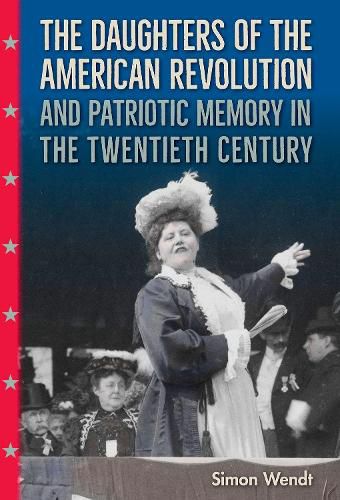Readings Newsletter
Become a Readings Member to make your shopping experience even easier.
Sign in or sign up for free!
You’re not far away from qualifying for FREE standard shipping within Australia
You’ve qualified for FREE standard shipping within Australia
The cart is loading…






This title is printed to order. This book may have been self-published. If so, we cannot guarantee the quality of the content. In the main most books will have gone through the editing process however some may not. We therefore suggest that you be aware of this before ordering this book. If in doubt check either the author or publisher’s details as we are unable to accept any returns unless they are faulty. Please contact us if you have any questions.
In this comprehensive history of the Daughters of the American Revolution (DAR), one of the oldest and most important women’s organizations in United States history, Simon Wendt shows how the DAR’s efforts to keep alive the memory of the nation’s past were entangled with and strengthened the nation’s racial and gender boundaries.
Taking a close look at the DAR’s mission of bolstering national loyalty, Wendt reveals paradoxes and ambiguities in its activism. While the Daughters engaged in patriotic actions long believed to be the domain of men and challenged male-centered accounts of U.S. nation-building, their tales about the past reinforced traditional notions of femininity and masculinity, reflecting a belief that any challenge to these conventions would jeopardize the country’s stability. Similarly, they frequently voiced support for inclusive civic nationalism but deliberately shaped historical memory to consolidate white supremacy.
Using archival sources from across the country, Wendt focuses on the DAR’s most visible work after its founding in 1890-its commemorations of the American Revolution, western expansion, and Native Americans. He also explores the organization’s post-World War II history, a time that saw major challenges to its conservative vision of America’s imagined community. This book sheds new light on the remarkable agency and cultural authority of conservative white women in the twentieth century.
$9.00 standard shipping within Australia
FREE standard shipping within Australia for orders over $100.00
Express & International shipping calculated at checkout
This title is printed to order. This book may have been self-published. If so, we cannot guarantee the quality of the content. In the main most books will have gone through the editing process however some may not. We therefore suggest that you be aware of this before ordering this book. If in doubt check either the author or publisher’s details as we are unable to accept any returns unless they are faulty. Please contact us if you have any questions.
In this comprehensive history of the Daughters of the American Revolution (DAR), one of the oldest and most important women’s organizations in United States history, Simon Wendt shows how the DAR’s efforts to keep alive the memory of the nation’s past were entangled with and strengthened the nation’s racial and gender boundaries.
Taking a close look at the DAR’s mission of bolstering national loyalty, Wendt reveals paradoxes and ambiguities in its activism. While the Daughters engaged in patriotic actions long believed to be the domain of men and challenged male-centered accounts of U.S. nation-building, their tales about the past reinforced traditional notions of femininity and masculinity, reflecting a belief that any challenge to these conventions would jeopardize the country’s stability. Similarly, they frequently voiced support for inclusive civic nationalism but deliberately shaped historical memory to consolidate white supremacy.
Using archival sources from across the country, Wendt focuses on the DAR’s most visible work after its founding in 1890-its commemorations of the American Revolution, western expansion, and Native Americans. He also explores the organization’s post-World War II history, a time that saw major challenges to its conservative vision of America’s imagined community. This book sheds new light on the remarkable agency and cultural authority of conservative white women in the twentieth century.